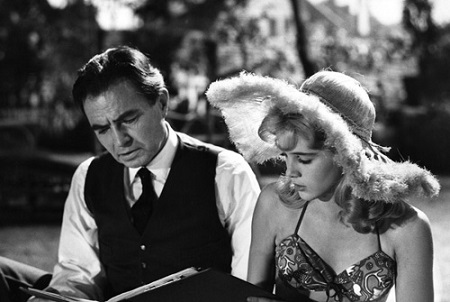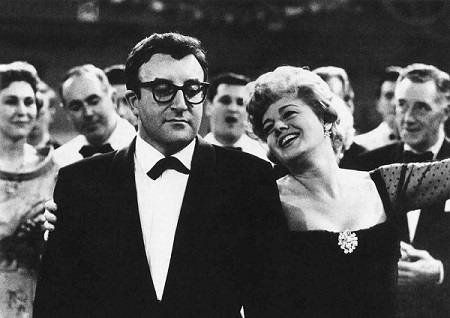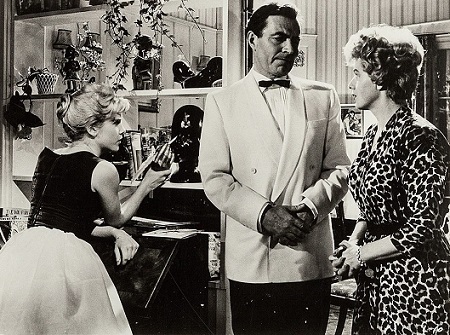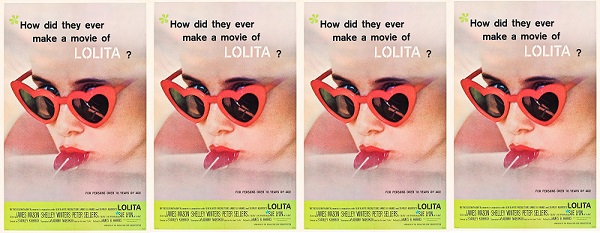It was nearly four years ago that Matt Lynn Digital reviewed the Vladimir Nabokov book Lolita. It was in the time of movie censorship over erotic content in the United States that Stanley Kubrick offered the movie Lolita (1962), a film whose genres range from crime to drama to romance to comedy. Rightly defining the end result remains difficult. The psychological elements of criminally erotic motivations are clear in the film, clearer in the book, and noted in the beginning for this movie review.

Lolita begins as a movie not with the central focus on the relationship between Humbert ‘Hum’ Humbert and Dolores ‘Lolita’ Haze, as portrayed respectively by James Mason and Sue Lyon. Instead we are introduced at first to Humbert ‘Hum’ Humbert shooting Clare Quilty, who was drunk, incoherent, and playing a piano. The scene occurs near the end of a four year span covered by the movie. Peter Sellers portrayed Clare Quilty.

The film then takes the audience to the beginning of the story. Humbert comes to the fictitious town of Ramsdale, New Hampshire to spend the summer prior to teaching at fictional Beardsley College, Ohio. Humbert seeks a place to stay, and comes a room offered by Charlotte Haze, a widow seeking companionship from a male suitor. Humbert at first rejects the accommodations, that is until 14-year-old Dolores ‘Lolita’ Haze is realized the live in the same house where Humbert would stay. Humbert decides to take the room.

A love triangle of sorts commences, with Charlotte Haze-Humbert at first having not been being married to Humbert ‘Hum” Humbert. Charlotte, as portrayed by Shelley Winters, pursues the bachelor professor with zest. To this end, Charlotte sends Dolores, or Lolita as Humbert takes to thinking of her, to an all-girl camp for the summer. As Charlotte takes Dolores to camp, Charlotte’s made presents Humbert with a letter declaring Charlotte’s love for Humbert and demanding that he vacate his room unless he feels as Charlotte does. Humbert laughs while reading the letter, yet agrees to marry Dolores’ mother.

Humbert becomes withdrawn in the immediate aftermath of the marriage. This is demonstrated in a dance attended by Clare Quilty, Vivian Darkbloom, and Jack Brewster, wherein Humbert does much to refuse interest in reciprocating feelings Charlotte has for him. Marianne Stone portrayed Darkbloom, whereas James B. Harris portrayed Brewster. Quilty, Darkbloom and Brewster all note the frigidness between Charlotte and Humbert. With Humbert’s true love interest at camp, he takes to expressing his strong feelings for Dolores and his severe feelings about Charlotte in a diary.

The discovery of the diary by Charlotte led to respond with pain and hurt. Charlotte’s acts severely, leading to an accident in the street that kills her. Humbert picks Dolores up from Camp Climax, and the two aim to spend the night at a hotel with an overflow of police officers that force the two to share a single room. A man makes advances on Humbert as Dolores, aka Lolita, sleeps in the room. Later, Lolita introduces Humbert to a “game” she learned at camp, wherein the clearest expression of an erotic encounter between Lolita and Humbert is expressed. The story progresses from there, with the basis for Quilty and Humbert dispute that centered on Lolita coming to the forefront.

The movie’s conclusion for Lolita largely brings the book’s conclusion for Lolita to bear, largely offering the clear suggestions of largely alarming and inappropriate motivations from many adults toward one another and toward a child through the course of the story. Much of the psychological drama of the film comes through, along with some truly dark humor of an erotic nature expressed throughout. With the storytelling constraints in play, my feeling is that Stanley Kubrick did remarkably well with the Lolita story. It is with this background that I give Lolita 3.75-stars on a scale of 1-to-5.
Matt – Saturday, September 18, 2021

One thought on “James Mason, Shelley Winters, Peter Sellers and the Stanley Kubrick movie ‘Lolita’”